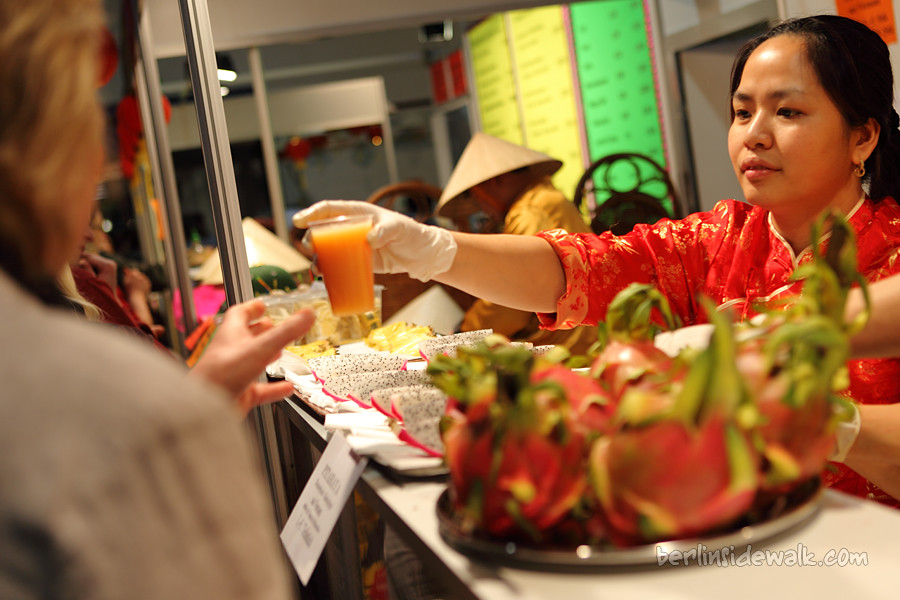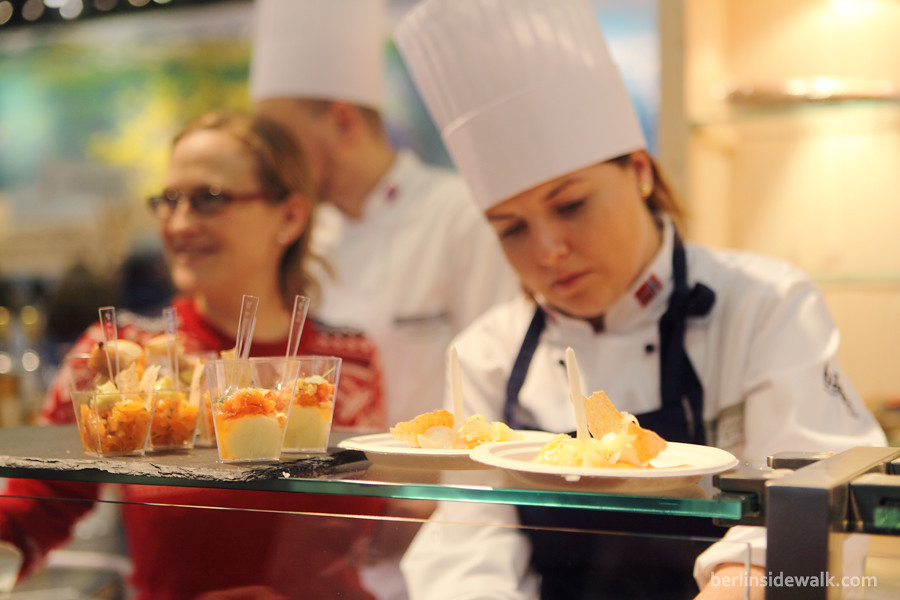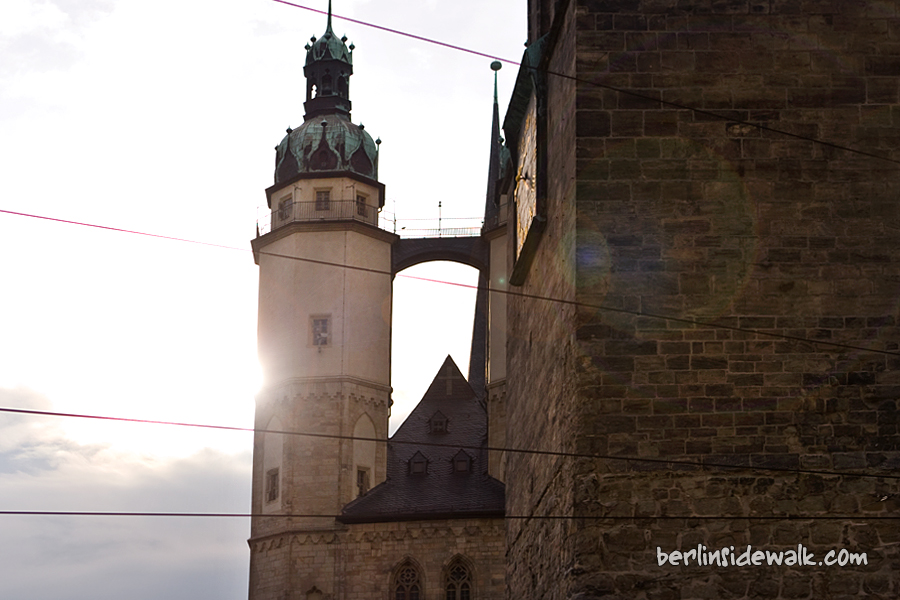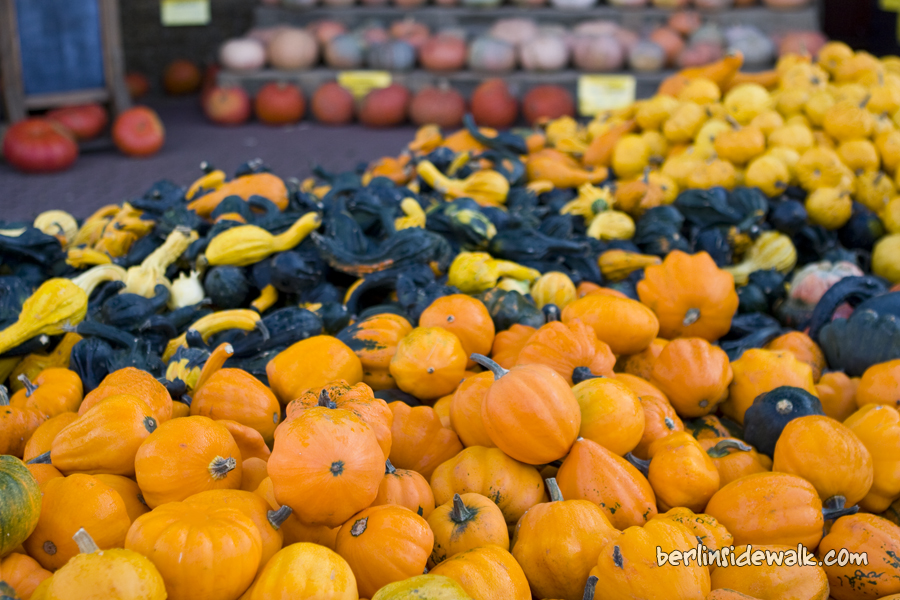
The International Green Week (ger: Grüne Woche) is the world’s biggest exhibition for the food, agricultural, and horticultural industries. Established in 1926 it takes place for the 77th time in 2012. Countries from around the world presenting their culinary delights to over 400.000 visitors.
So it’s all about food, how to produce it, how to cook it, how to eat it. 26 hall complexes covering an area of 115,000 square metres. Approximately 100,000 items of food, luxury foods and beverages from all over the world, thousands of pets and over 30,000 plants in bloom are just some of the impressive statistics of this event.
Ever wanted to try a Crocodile Burger, a Kangaroo Steak or an Elk Schnaps? What about the famous English Toffee, German Käsespätzle or a Shark Soup? With a new scent around every corner, I had a lot of fun eating all the different things I’ve never tasted before.
Continue reading








